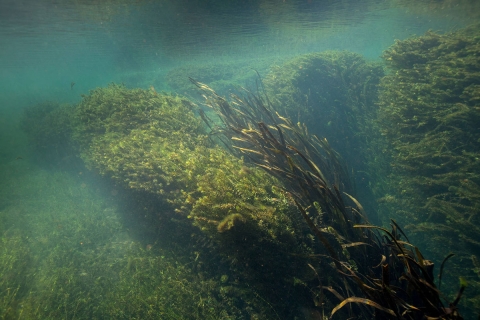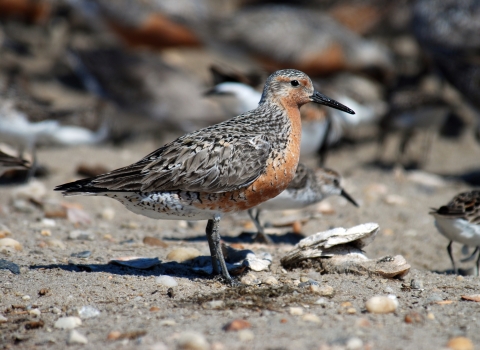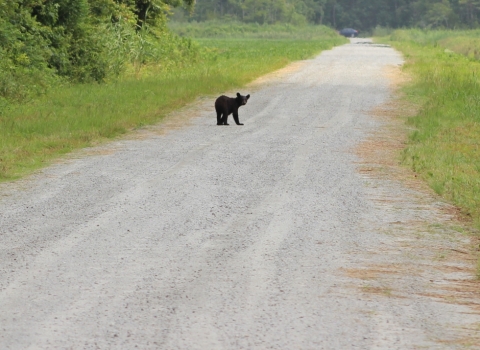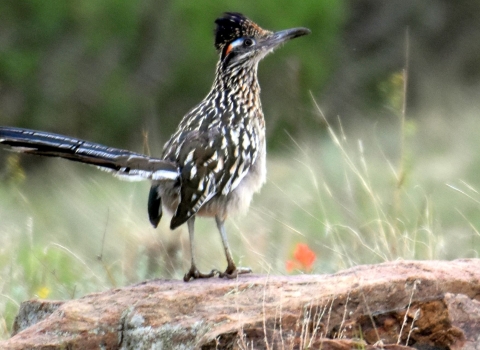The U.S. Fish and Wildlife Service announced $4 million to address the early detection and rapid response for aquatic invasive species invasive species
An invasive species is any plant or animal that has spread or been introduced into a new area where they are, or could, cause harm to the environment, economy, or human, animal, or plant health. Their unwelcome presence can destroy ecosystems and cost millions of dollars.
Learn more about invasive species .
Aquatic invasive species cause tremendous harm to our environment, our economy, and our health. They can drive out and eat native plants and wildlife, spread diseases, and damage infrastructure. The U.S. spends billions of dollars every year to manage and control these aquatic invaders and protect the nation's waters. Although prevention is the most effective approach to eliminate or reduce the threat of aquatic invasive species, Early Detection and Rapid Response (EDRR) serves as a failsafe when prevention measures are ineffective or unavailable.
Recognizing the need for action, the U.S. Department of the Interior identified advancing a National EDRR Framework for invasive species as a priority for Bipartisan Infrastructure Law funding and took steps to invest in supporting components of such a framework. One such critical component was the establishment of a pilot Rapid Response Fund for Aquatic Invasive Species that can be used to assess and support response actions for quick containment or eradication of newly detected species, thus avoiding costly long-term and wide-spread control efforts.
The Department invested $1 million to establish this pilot fund, with an additional $1 million envisioned each year 2024 through 2026 as part of advancing a National EDRR Framework. The rapid response funds are awarded quarterly through a competitive funding opportunity to allow timely response to new species threats while maintaining a fair, competitive, and transparent process. The Rapid response fund is administered within the existing authorities of the Service’s Fish and Aquatic Conservation program and coordinated though the Aquatic Nuisance Species Task Force.
Funding recipients will be listed below as they are awarded.
Fourth Quarter 2024 Rapid Response Funding Recipients
| Project Name | State | Funding |
| Early Detection and Rapid Response of Invasive Octocoral at the Pearl Harbor Entryway | Hawaii | $245,000.00 |
| Eradication of the Founding Population and Delineation of Caulerpa prolifera in the Coronado Cays and South San Diego Bay | California | $200,000.00 |
Third Quarter 2024 Rapid Response Funding Recipients
| Project Name | State | Funding |
| Eradication and post-monitoring of invasive zebra mussel, Dreissena polymorpha, in Lake Norman Quarry in Iredell County | North Carolina | $225,000.00 |
Second Quarter 2024 Rapid Response Funding Recipients
| Project Name | State | Funding |
| Rapid response to the first known signal crayfish, Pacifastacus leniusculus, occurrence in a Minnesota lake | Minnesota | $253,326.79 |
| Rapid Response Plan for Hydrilla(Hydrilla Verticillata) in Massachusetts | Massachusetts | $251,000.00 |
First Quarter 2024 Rapid Response Funding Recipients
| Project Name | State | Funding |
| Eradication of the invasive aquatic plant elodea in the Yukon River Basin | Alaska | $234,000 |
| Eradication of the founding population and delineation of Caulerpa prolifera in the Coronado Cays and South San Diego Bay | California | $350,000 |
| Australian redclaw crayfish eradication in the Clark County Wetlands Park | Nevada | $68,000 |
| Control of newly found hydrilla in Indian Lake | Rhode Island | $133,000 |
Read the full Notice of Funding Opportunity for the rapid response fund.
The Aquatic Invasive Species Program
The Service's Aquatic Invasive Species program safeguards waterways and communities from invasive species by working with partners and educating the public. Our regional coordinators work closely with the public and private sector partners and our network of conservation offices to conduct on-the-ground control projects and early detection surveillance and monitoring, and provide technical support. The Service also develops regulations to prohibit the importation and some transport of harmful species known as injurious wildlife and serves as a co-chair to the Aquatic Nuisance Species Task Force.





